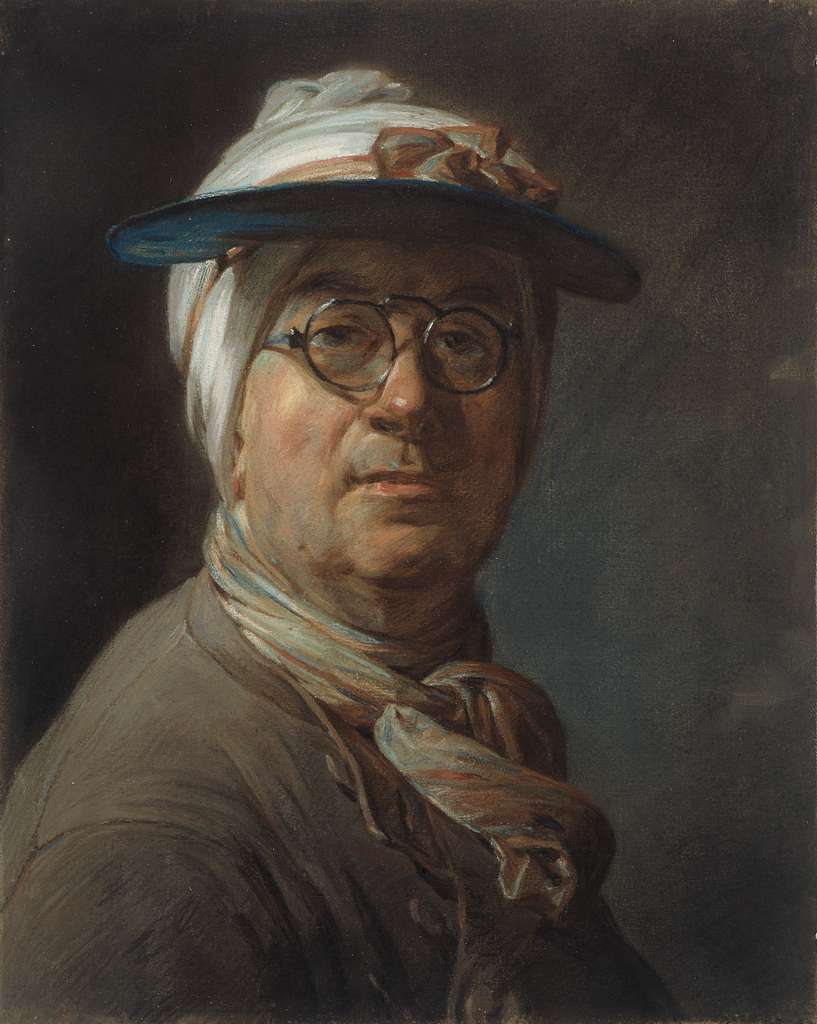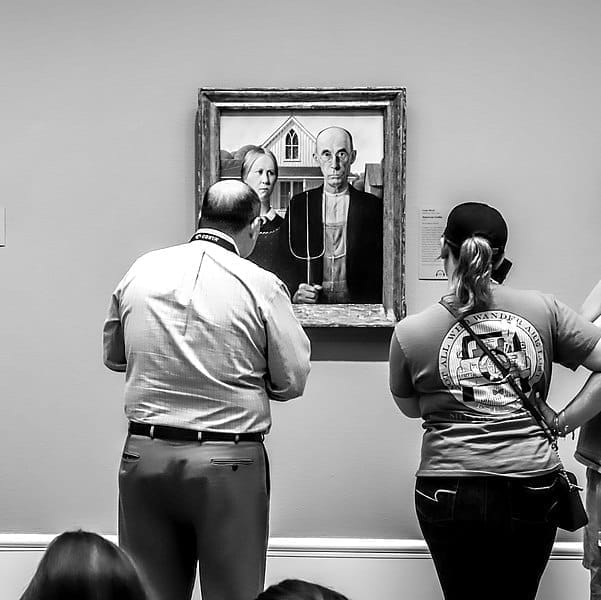When we consider the centuries of art’s existence, it may seem odd to discuss the prominence of eyewear in artworks made by various artists throughout the years. After all, neither the Mona Lisa nor the Girl with a Pearl Earring wore glasses, so why should we care?
However, a new eyewear collection from Pair Eyewear — in partnership with The Met — shows that the two seemingly different worlds may have more in common with each other than you think. The 16-piece collection is inspired by famed artworks like Monet’s Water Lilies and Renoir’s Bouquet of Chrysanthemums, blending acclaimed art homage with fashionable eyewear.
While the collection is a great example of life imitating art, a closer inspection of artworks through the centuries may reveal more about historical societies and biases — through the use of eyeglasses. In this post, we’ll take a look at depictions of eyeglasses in classic art and how they have evolved in modern art forms:
Eyeglasses in classic art
When considering depictions of eyeglasses in classic paintings and artworks, it’s important to acknowledge the limitations of their time. For example, Munch’s The Scream wouldn’t have the agonized subject wearing Ray-Bans — unless it was an AI-generated reimagining or playful fanart. At the same time, glasses were historically linked to the rich and intelligent, with some societies believing that “the bigger the eyeglass lens, the richer.”
Historically, eyeglasses were first popularized in the form of “armless” glasses called besicles, which stayed in place using nose-pincers instead of the classic glasses arms we know today. These were preceded by clouants, which didn’t even have the nose-pincers and needed to be held in place by hand.

French painter Jean-Siméon Chardin is famed for his self-portraits throughout the 1770s, depicting himself wearing variants of besicles and an “eyeshade,” which featured an early, painful design of glasses arms that clamped too tight and resulted in headaches. Later self-portraits of Chardin saw the artist returning to the armless besicles. Of course, the still-life artist is more known for his intimate and vivid slice-of-life paintings, like the recently auctioned Le Melon Entamé (The Cut Melon), which sold for $28.76 million in Paris.

Later depictions of eyeglasses in painting include American diplomat Benjamin Franklin, who coincidentally invented the earliest form of bifocals after cutting his near-sighted and far-sighted lenses in half to avoid constantly switching between them. Franklin’s original bifocal design remains unchanged, although technological innovations in recent years have tried to circumvent the initial design.

Arguably, one of the most famous American paintings in history is Grant Wood’s American Gothic. At the time of its completion in 1930, the painting was miscaptioned with An Iowa Farmer and His Wife, although Wood later clarified the subjects were meant to be “small-town types” who were Americans and not necessarily Iowans. Still, the painting remains an iconic depiction of American life, often parodied and homaged, from New Yorker cartoons to My Little Pony snippets. Most importantly, the painting solidified the shift of the eyeglasses as a social symbol — from a luxury reserved for the rich to an accessory fit for “small-town types.”
Eyeglasses in modern art
Grant Wood’s character study set in a distant urban Americana is famous for many reasons, including the man-in-the-painting’s distinct wiry round glasses. While the Art Institute of Chicago mistakenly labeled the man a farmer, the model was a dentist (who practiced for Wood and his sister, the woman model in the painting). While certainly not the only painting at the time popularizing eyeglasses as a social and style accessory, American Gothic is part of the shift from glasses as luxury signifier to an accessible, style and function accessory.
Today, modern eyeglasses from brands like Oakley and Ray-Ban have drastically changed the classic, perfectly rounded eyeglasses of older times. Oakley’s Chamfer™ model literally says Squared in its name, while other unique lens shapes like the cat-eye are popularized by Ralph Lauren’s RA7152U. The visible change in eyeglasses designs, which one could argue maybe art in itself, marks a focal step towards fashion and style. The rise in the use of eyeglasses for fashion can also be seen in modern art.

In a previous post, we highlighted the life and art of pop artist Andy Warhol, known for his eccentric silver hair and unique choice of oversized glasses. Unlike the artists centuries before him, Warhol dabbled in a wide array of art forms, from films and sculptures to prints. Throughout his career, Andy Warhol embodies his art and creativity through his eccentric appearance and fashion choices — including his full-rim glasses from New York-based eyewear company Moscot.
As art becomes more accessible and widespread via the Internet, more and more people are contributing to the infinite pool of eyeglasses depictions, whether fanarts of prominent figures or reflective self-portraits drawn, painted, or sketched by art students and aspiring artists.
Beyond traditional art on paper and canvas, then, the best place to look for modern eyeglasses depictions is multimedia. Film and television, in particular, have become welcoming avenues for highlighting eyeglasses as a reflection of society, a character, or other plot points.
The Wachowskis’ iconic sci-fi action film franchise, The Matrix, notably featured modern and futuristic eyewear throughout its films. In particular, a pair of sunglasses worn by Laurence Fishburne’s Morpheus brought back the armless glasses design from the original besicles painted by the likes of Chardin in the 18th century, complete with the nose-clip design. Today, fans of the franchise — or intrigued eyewear enthusiasts — can get Morpheus’ besicles-inspired shades from bespoke eyewear company Tom Davies. Ironically, Fishburne needed his sunglasses taped to stay in place during filming instead of pinched to his nose — an unintentional nod to Chardin’s annoyance towards his own besicles centuries ago.










